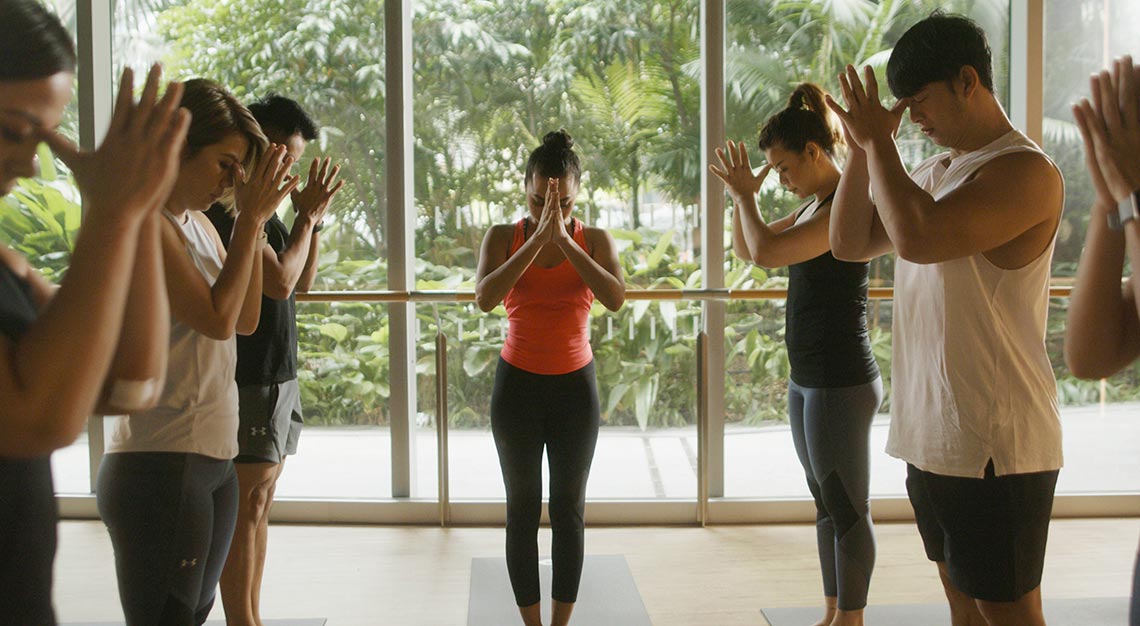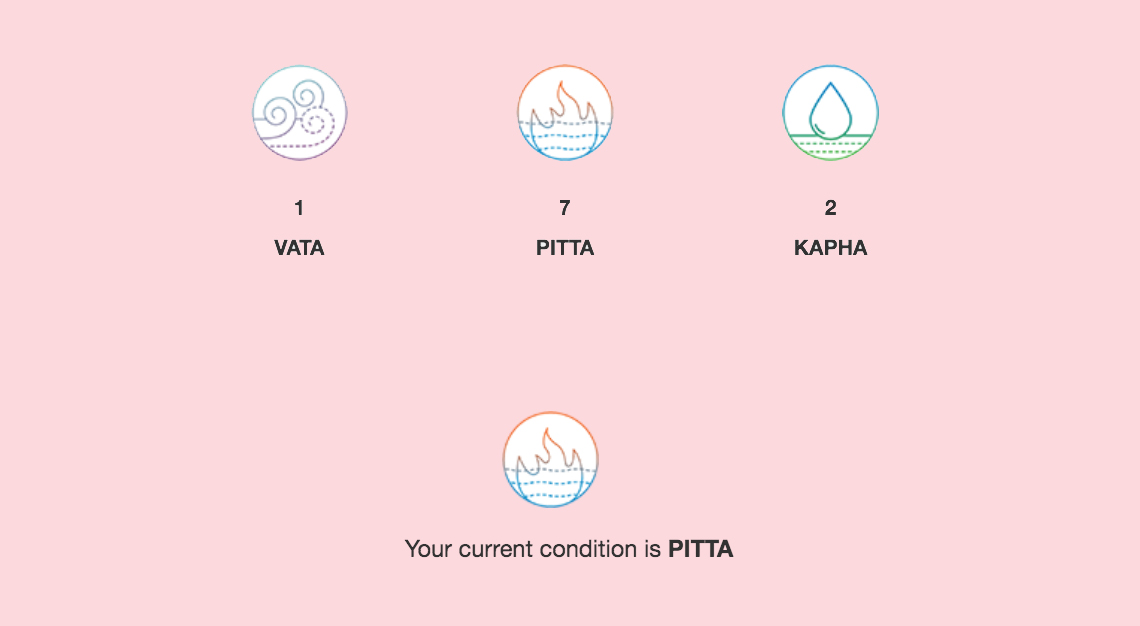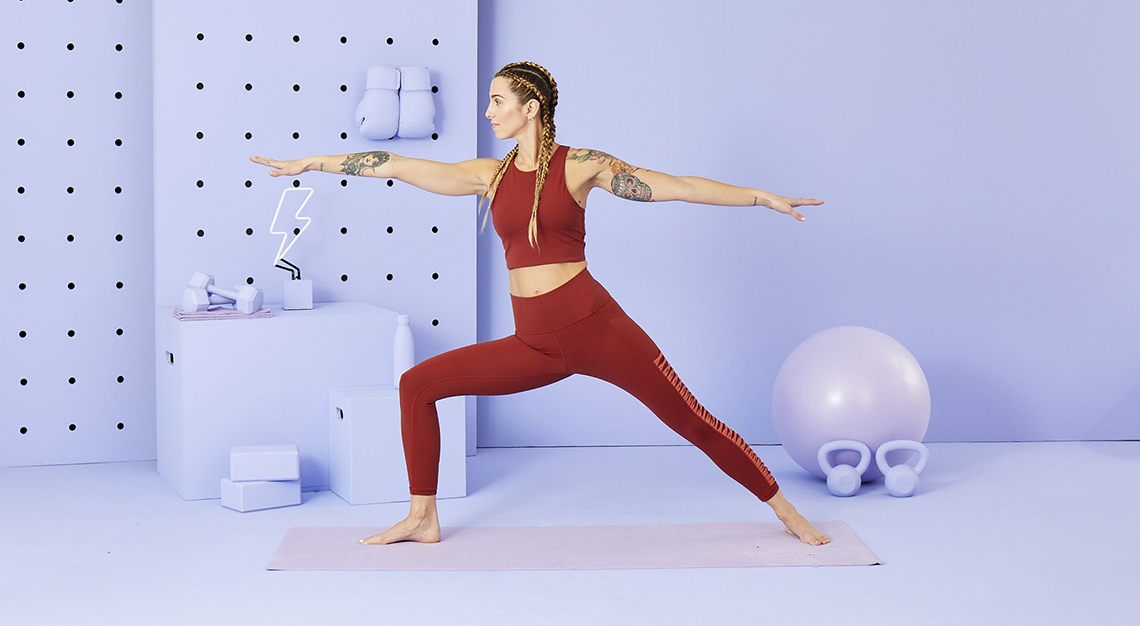Virgin Active Singapore follows traditional Ayurveda methods, suggesting the kind of yoga you should be doing according to your dosha
What’s your favourite yoga style? Of the more commonly practised forms in Singapore, I lean towards hot and vinyasa yoga. My least favourite? Yin yoga, which involves lying down and keeping a pose for up to 10 minutes. And it’s probably because I just can’t sit still. As it is, my weekly exercise routine comprises a mixture of HIIT (pyramid and boxing-based), a strength session, bouldering, swimming and jogging. So imagine my surprise when, at Virgin Active Singapore, I’m told that vinyasa yoga isn’t well suited for me.


What’s your dosha?
To offer guests a more personalised and well-rounded fitness journey, Virgin Active is helping clients select the most suitable type of yoga – hatha, yin and vinyasa, branded at Virgin as align, calm and flow respectively – for their body.
But the above does not refer to one’s body shape, nor does it take into account one’s fitness goal or their mood of the day. Instead, the method traces yoga back to its Ayurvedic roots, looking at the makeup of one’s dosha. In Ayurveda, dosha refers to one’s body composition, which is made up of two of five elements: water, earth, fire, air and space. While most of us will have a combination of all three doshas – vata, pitta and kapha – one of those will stand out the most.
It sounds like a whole lot of terminology, but Virgin Active has provided layman explanations on its website. To find out what your dominant dosha is, and the type of yoga that would work the best for you, simply answer a few questions on the site. This service is complimentary to both members and the public.


I’ve a hunch that I’m pitta-dominant – judging by my personality – and the questionnaire confirms it. My fire and water elements mean that my body and mind are usually ‘on fire’ and ready to go. And while I enjoy vinyasa yoga, it actually does nothing to quell the raging fire in my body, but instead adds oil to it. In fact, the yoga most suited for those with pitta-dominant doshas is yin yoga, which aids in cooling our core and regulating our body temperature as we lay still to stretch.
Of course, this is not to say I’ve to avoid vinyasa yoga totally. I can still do it, albeit less frequently, while adding more yin yoga sessions to my workouts.
Other supporting factors also include the clothes we wear and the food we eat. My body is ‘heaty’ enough, which means I should wear clothes that allow my body to ‘breathe’. Activewear brands such as Under Armour – also a partner of Virgin Active – offers yoga wear in various thicknesses, catering to different doshas. For example, vata-dominant types are prone to getting cold easily and should don slightly thicker outfits, even while exercising.

You are what you eat
Diet also plays a part in balancing one’s dosha. While there are numerous dieting and detox programmes that cater to one’s fitness and wellness goals, few offer them based on Ayurvedic principles. One such company that does so is EGA Juice Clinic, which, as its name suggests, sells juice and detox packages.
Depending on your dosha, you’re recommended a certain range of juices to help keep your body in balance. As a hardcore pitta, I’ll need cool, sweet fruits – which kapha doshas should avoid – to cleanse my lymphatic system, blood and liver.
I’ve not tried any juice cleansing programmes, much less one that caters to my dosha, so I can’t say for sure if they work. Being a skeptic, I’m inclined to think that it’s a ‘cheat’ way of dieting. To be fair though, juice cleanses have come a long way from merely loading an obscene amount of sugar in your body.
Like traditional Chinese medicine, the concept of Ayuveda does have its merits, and the only way to find out is to give it a go and see how you feel after. I’m also not thrilled about having to lie still and ‘relax’ during yoga, but if that can help me feel better – which is the point of exercising in the first place – you can bet your bottom dollar I’ll be giving it a shot.






